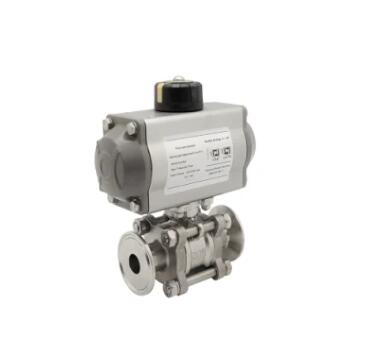How do ball valves compare to other types of valves
2023-11-03
Ball valves, like other types of valves, have their own set of advantages and disadvantages that make them more suitable for certain applications and less so for others. To provide a well-rounded comparison, here's how ball valves compare to some other common types of valves, including gate valves, globe valves, and butterfly valves:
1. Ball Valves:
- Advantages:
- Quick operation: Provide rapid on-off control with a 90-degree turn.
- Tight shut-off: Offer reliable sealing and minimal leakage.
- Suitable for a wide range of fluids, including corrosive ones.
- Minimal pressure drop when fully open.
- Low maintenance due to a simple design.
- Good for high-temperature applications with appropriate materials.
- Disadvantages:
- Limited flow control: Not ideal for precise throttling.
- Potential for cavitation in high-pressure applications.
- May not be suitable for very large sizes or high-velocity flows.
2. Gate Valves:
- Advantages:
- Good for full flow control, providing minimal pressure drop.
- Suitable for high-temperature and high-pressure applications.
- Excellent shut-off capabilities.
- Ideal for both liquid and gas services.
- Disadvantages:
- Slow operation: Gate valves require many turns to open or close.
- Prone to seat wear over time, leading to leakage.
- Not suitable for precise flow control.
- Not recommended for slurries or applications with solid particles.
3. Globe Valves:
- Advantages:
- Excellent flow control and precision in throttling.
- Suitable for handling slurries and fluids with solid particles.
- Tight shut-off.
- Can be used in various positions (horizontal, vertical, or angled).
- Disadvantages:
- Slower operation than ball valves for on-off applications.
- Higher pressure drop compared to ball valves when fully open.
- Not as suitable for very high-temperature or high-pressure applications.
- More complex design, potentially requiring more maintenance.
4. Butterfly Valves:
- Advantages:
- Quick operation with a 90-degree turn.
- Low pressure drop when fully open.
- Suitable for large sizes and low-pressure applications.
- Good for handling corrosive or abrasive fluids.
- Disadvantages:
- Limited precision in flow control.
- Potential for cavitation in high-pressure applications.
- May not provide as tight a shut-off as some other valves.
- Prone to seat wear and leakage over time.
The choice of valve type should be based on the specific requirements of your application, including factors like flow control needs, pressure, temperature, fluid type, and the frequency of operation. Ball valves are generally well-suited for applications that require quick, reliable shut-off and are less suitable for those demanding precise throttling. Understanding the strengths and weaknesses of each valve type is crucial for selecting the most appropriate valve for your particular use case.



